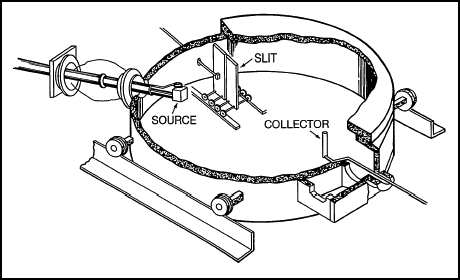The Manhattan Project: Making the Atomic Bomb
Part II: Early Government Support
A Push From Lawrence
During 1939 and 1940 most of the work done on isotope separation and the chain reaction pile was performed in university laboratories by academic scientists funded primarily by private foundations. While the federal government began supporting uranium research in 1940, the pace appeared too leisurely to the scientific community and failed to convince scientists that their work was of high priority. Certainly few were more inclined to this view than Ernest O. Lawrence, director of the Radiation Laboratory at the University of California in Berkeley. Lawrence was among those who thought that it was merely a matter of time before the United States was drawn into World War II, and he wanted the government to mobilize its scientific forces as rapidly as possible.
Specifically what Lawrence had on his mind in early 1941 were experiments taking place in his own laboratory using samples produced in the cyclotron. Studies on uranium fission fragments by Edwin M. McMillan and Philip H. Abelson led to the chemical identification of element 93, neptunium, while research by Glenn T. Seaborg revealed that an isotope of neptunium decayed to yet another transuranium (man-made) element. In February, Seaborg identified this as element 94, which he later named plutonium. By May he had proven that plutonium-239 was 1.7 times as likely as uranium-235 to fission. This finding made the Fermi-Szilard experiment more important than ever as it suggested the possibility of producing large amounts of the fissionable plutonium in a uranium pile using plentiful uranium-238 and then separating it chemically. Surely this would be less expensive and simpler than building isotope-separation plants.

Lawrence, demonstrating his characteristic energy and impatience, launched a campaign to speed up uranium research. He began by proposing to convert his smaller cyclotron into a spectrograph to produce uranium-235. Since both the cyclotron and the spectrograph used a vacuum chamber and electromagnet, this conversion would be relatively uncomplicated. Lawrence then took his case to Karl T. Compton and Alfred L. Loomis at Harvard University, both doing radar work for the National Defense Research Committee and benefiting from Lawrence's advice in staffing their laboratories. Infected by Lawrence's enthusiasm, Compton forwarded Lawrence's optimistic assessment on uranium research to Bush, warning that Germany was undoubtedly making progress and that Briggs and the Uranium Committee were moving too slowly. Compton also noted that the British were ahead of their American colleagues, even though, in his opinion, they were inferior in both numbers and ability.